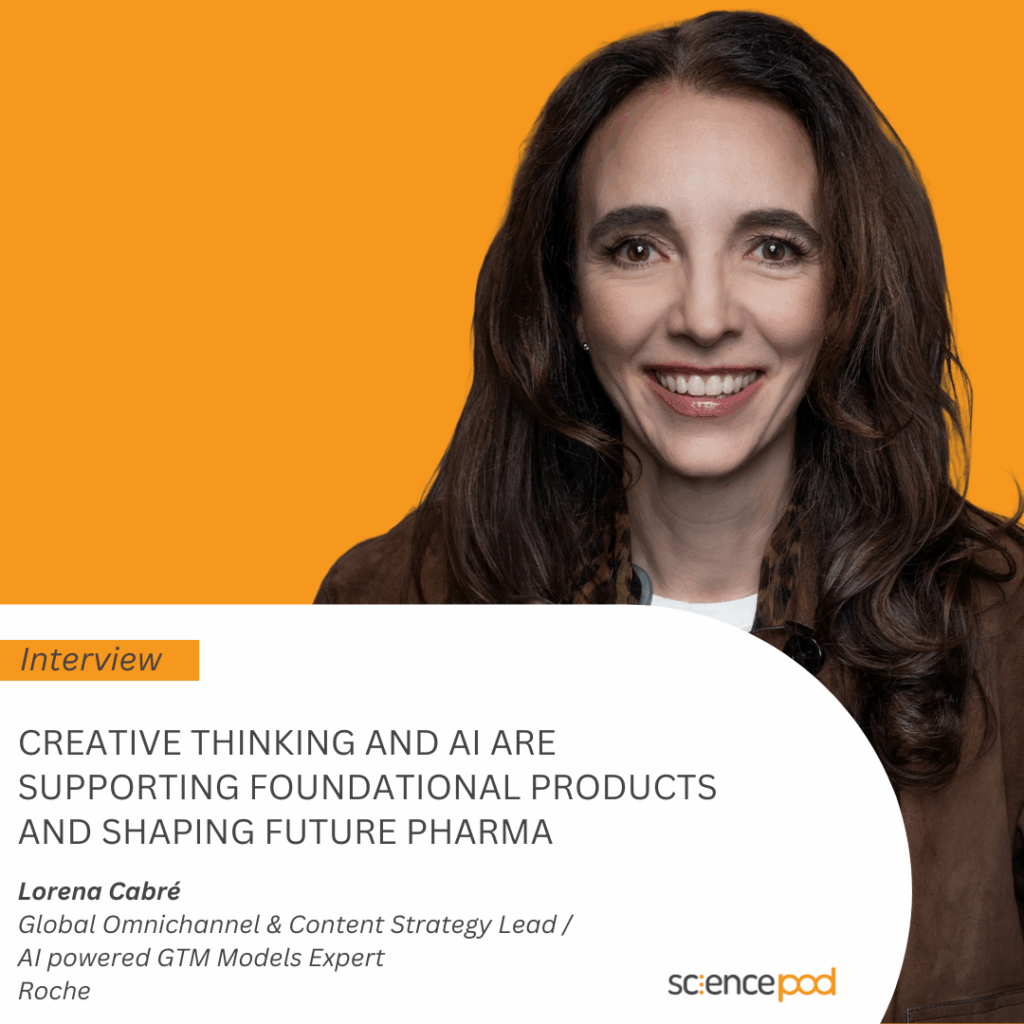Interview with Lorena Cabré, Global Omnichannel & Content Strategy Lead / AI powered GTM Models Expert at Roche.
Lorena Cabré is motivated by reimagining digital engagement for foundational brands. As Global Omnichannel & Content Strategy Lead / AI powered GTM Models Expert at Roche, she has a clear mission and strong vision for the future
Lorena will be speaking in the session From Static to Smart: How AI is Shaping Next Gen Pharma Content at NEXT CX & AI 2025, which will take place in Vienna on the 18th and 19th of November.
SciencePOD spoke to Lorena in advance of the event to hear more about her role and customer-focused approach.
Could you tell us about your role at Roche?
My role is about orchestrating digital engagement for foundational brands, those at the late part of the life cycle. I’m there to partner and understand what customers need from the company, what is relevant to say. Being present with the information needed by customers to make treatment decisions for a patient to be well. That’s what motivates me every morning: my mission has been to re-imagine how to engage in this space, where there are no more HCPs visits.
How can digital address the challenge of keeping engagement with HCPs through a foundational product’s lifecycle?
Digital is what enables us to reach HCPs when we might not otherwise be able to. As brands go through their lifecycle, they have a little less resources or those resources are shifted to other priorities. Digital allows us to scale our approach and to continue to be there, delivering relevant content while delivering value. Digital also enables equity. It allows us to be present in different sized markets and not only focus on the bigger ones. It’s an always-on approach; it’s about staying there and continuing to support HCPs when they need it.
Could you give us an example where you have piloted such an approach and extended it?
In the legacy products space, I had a great opportunity to collaborate with affiliates in the Asia-Pacific (APAC) region. We said, ‘What if we come together, use the technology and data we have, and co-create an end-to-end campaign? What would success look like?’ We brought together the people from business, commercial, marketing, and we experimented. We started with small tests and created a proof of concept for one country and disease area, then we tested our ability to scale the model’s reach beyond that. Now we’re serving different disease areas and specialities in more than ten countries. It’s about engaging at scale in a very standardised way.
What are the lessons learned from aligning medical and commercial functions in driving customer engagement for such products?
Credit goes to the teams we were working with. From the very beginning, when we started talking about content and how to do it, input was from both commercial and medical. That has been a big success factor. In our weekly meetings, the medical lead and the commercial lead sit together; they approve the global content that goes to the affiliates. Everyone is clear what they’re doing, what part they need to play, and what is expected. This is a space with limited resources, but working together is what has allowed speed and success.
What type of leadership mindset is required to be successful in improving customer engagement?
Someone who is open to being creative and experimenting in new ways, but also clear that we execute to learn and then we iterate. A leader who takes away blockers and provides guidance empowering you to move things. That’s a growth mindset – creative, and open to experimentation and learning.
Where do you see the role of AI in future commercial and medical content creation?
Certain foundations need to be there: a global brand strategy consistently applied with some flexibility for markets. Then it’s about leveraging technologies, like GenAI, and synergising global to local. Think modular content, components or content blocks that can be standardised then reused hundreds of times for different campaigns and countries. AI agents are fantastic for personalising content. Look at what the customer needs and how you need to say it, not what you want to tell them. My message is that this change needs to be managed. It’s our responsibility to leverage AI and data for the benefit of everyone, doing it ethically for the good of humanity with ‘controlled’ risk.

